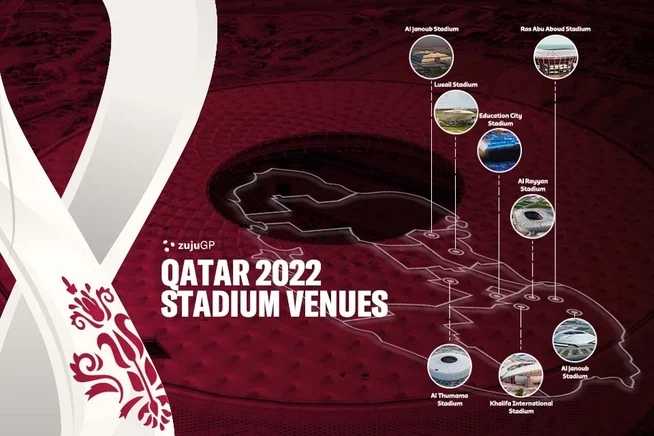
Around 1.5 million people are expected to visit Qatar at the end of 2022 as the World Cup comes around once again, with another 5 billion people around the world tuning in via live broadcasts.
With so much attention focused on the first World Cup to be held in the Arab World, hosts Qatar have spared no expense as they broke ground on six new stadiums as well as refurbishing Al-Rayyan Stadium (built in 2003) to go with the much older Khalifa International Stadium complex (built in 1976).
But what will happen to these stadiums after a winner is crowned and the crowds leave Qatar?
The problem with World Cup infrastructure
Past experience has shown many host countries are unprepared to deal with the empty infrastructure, the most famous recent example being Brazil in 2014 when they were left with several ‘white elephants’ that fell into disrepair shortly after the tournament.
This is a significant worry for Qatar, as the nation does not have much of a football or sporting heritage and much of the infrastructure had to be built from scratch.
Qatar’s organisers have therefore been forced to come up with creative solutions to ensure the country will not be faced with the problem of how to utilise eight major football stadiums after the World Cup ends.
A lasting legacy
The architects in charge of building Qatar’s new stadiums pledged to utilise modular elements when designing these structures. This has largely come in the form of stadiums with upper tiers that can be detached at tournament end.
The likes of Al Bayt Stadium, Ahmad Bin Ali Stadium, Al Janoub Stadium, and Al Thumama Stadium will be reconfigured into smaller stadiums of around 20,000 to 25,000 seats, which will be much more suitable to domestic entertainment and sporting needs.
Up to 170,000 seats will be removed from these stadiums and donated to other nations to help develop their sporting infrastructure.
A World Cup first
Stadium 974 (formerly known as the Ras Abu Aboud Stadium), was definitely built with Qatar’s future needs in mind. The unique 40,000-seater stadium’s design incorporated 974 recycled shipping containers in homage to the site’s industrial history, and will be completely dismantled upon the conclusion of the tournament.
The resulting materials will then be reused in other construction projects in other lesser-developed countries.
This is the first temporary venue in World Cup history, with the site being repurposed into a waterfront development.
Community spaces and sustainable stadiums
Several of the stadium sites will be repurposed, even as seats are removed to make them much more sustainable in the long run.
A shopping centre and a hotel will be added to Al Bayt Stadium, while Al Thumama Stadium will welcome a hotel and a sports clinic.
Al Janoub Stadium will become Al-Wakrah Sports Club’s new home, replacing the current Saoud bin Abdulrahman Stadium, and will play host to its Qatar Stars League matches.
Lusail Iconic Stadium, on the other hand, will be repurposed into a community space for schools, shops, cafes, sporting facilities and health clinics.
Blueprint for the future?
While much has been made, rightly so, about human rights issues during the construction of Qatar’s new World Cup stadiums, there are perhaps some things we can take away from this World Cup too.
While the plan was initially to have 12 stadiums for Qatar 2022, the number was cut down to 8 due to financial concerns. This makes it the fewest number of World Cup venues since Brazil 1970, when the competition had only 16 teams.
If all goes to plan, Qatar’s stadiums will not sit empty after the tournament or fall into disrepair like the Arena da Amazonia in Manaus which had limited use due to its remote location and small crowds in the region.C
Future World Cup hosts would do well to take note.
Exploring a partnership?
We welcome visionaries who are looking to build a digital football future together.
